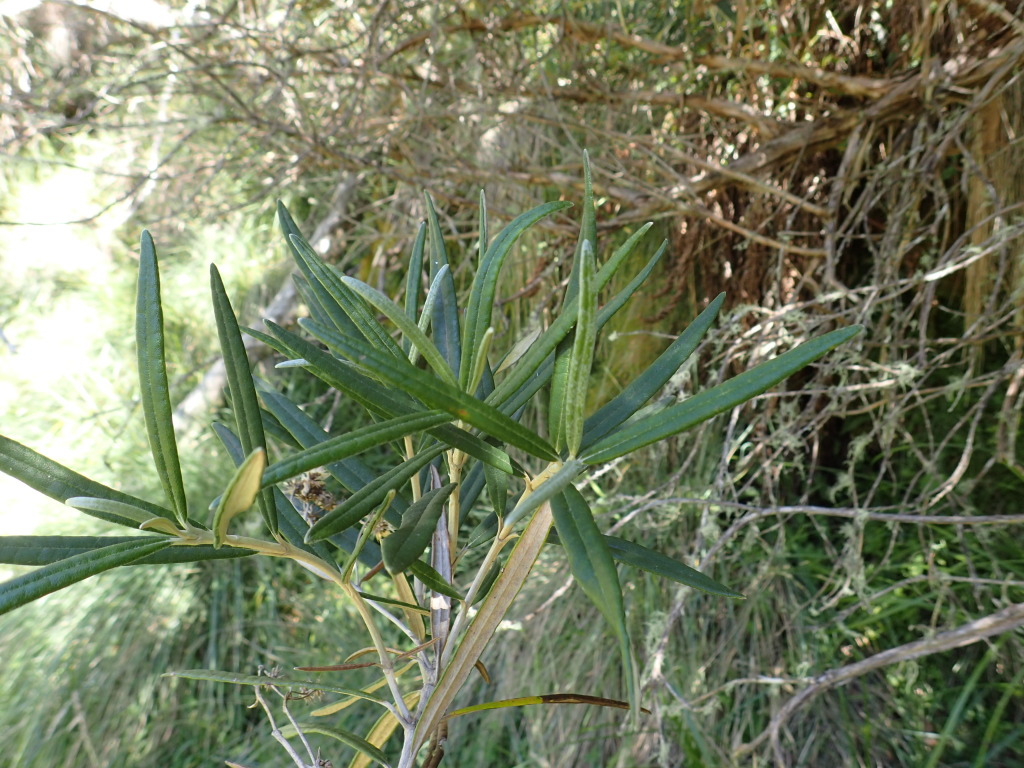Olearia alpicola
(F.Muell.) F.Muell. ex Benth.Open, sometimes widely spreading shrub to c. 2 m high; branchlets closely tomentose with minute T-shaped hairs. Leaves opposite, c. oblong to narrow-ovate, 60–130(–140) mm long, 3–12(–17) wide, blunt to acute, flat, upper surface dark green, glabrous, lower surface white to grey (rarely young growth pinkish), densely tomentose; petiole to c. 12 mm long. Capitula 19–25 mm diam., in corymbs; peduncles to 25 mm long; involucre conical, 4.5–5.5 mm long; bracts 4–6-seriate, graduating, sericeous, margin membranous, fimbriate, often purplish. Ray florets 5–8, white, ligules 5–10 mm long; disc florets 9–11, yellow. Cypsela narrowly obovoid, 6–8-ribbed, 2–3.5 mm long, glabrous or sparsely sericeous near apex; pappus bristles white to straw-coloured, 5–8 mm long. Flowers Dec.–Feb.
GipP, EGL, EGU, HSF, HNF, MonT, HFE, VAlp. Also NSW. Moderately common in moist montane to subalpine forests of the eastern ranges (Dargo High Plains, Cobberas, Bonang, Errinundra Plateau etc.).
Closely related to O. aglossa and to O. megalophylla (with which it is often found). See notes under those species.
Walsh, N.G.; Lander, N.S. (1999). Olearia. In: Walsh, N.G.; Entwisle, T.J., Flora of Victoria Vol. 4, Cornaceae to Asteraceae, pp. 886–912. Inkata Press, Melbourne.
 Spinning
Spinning
